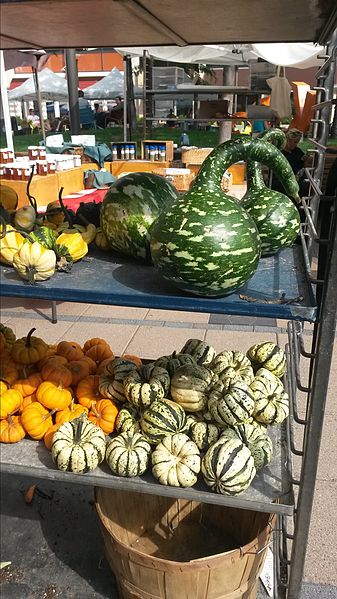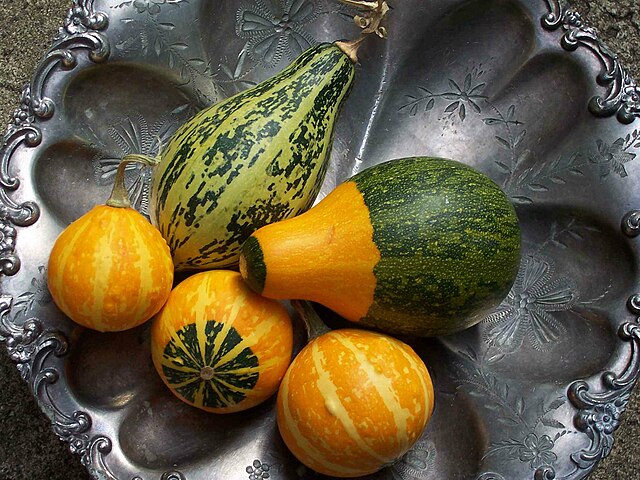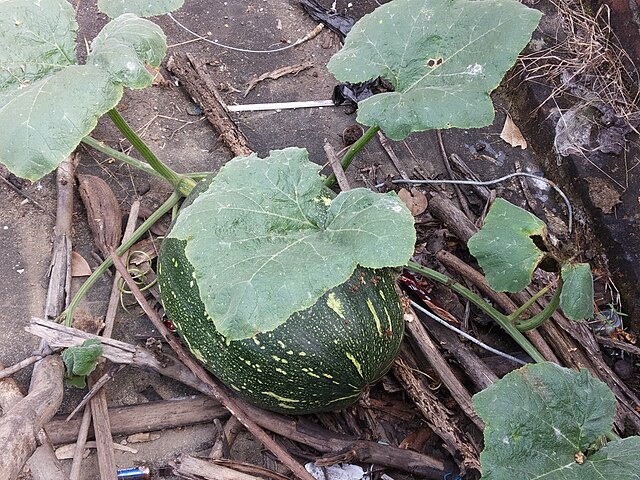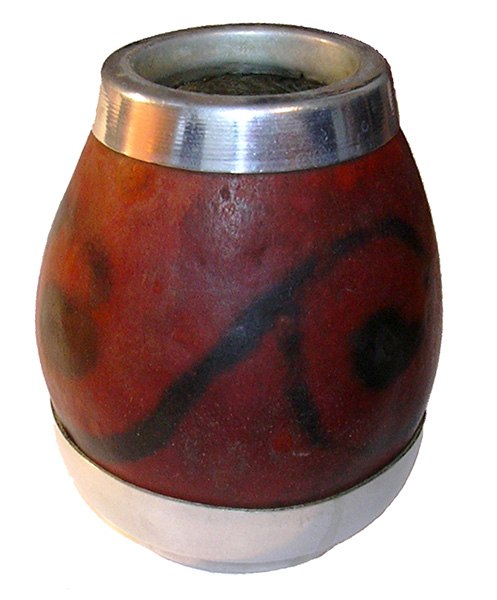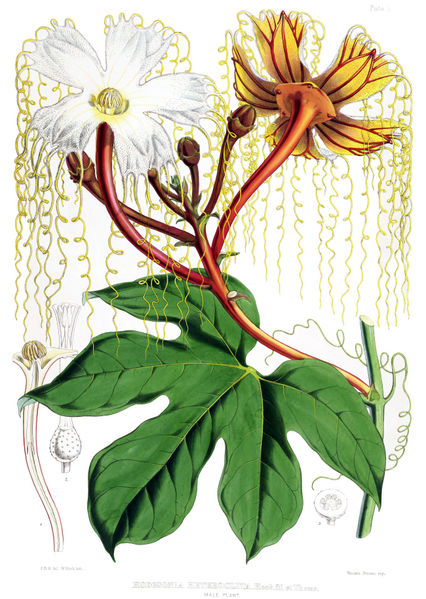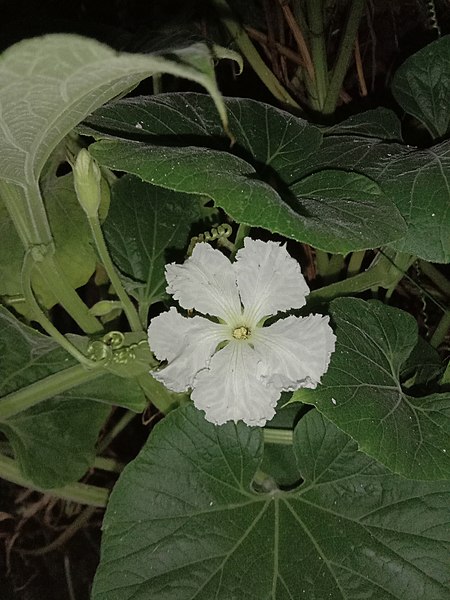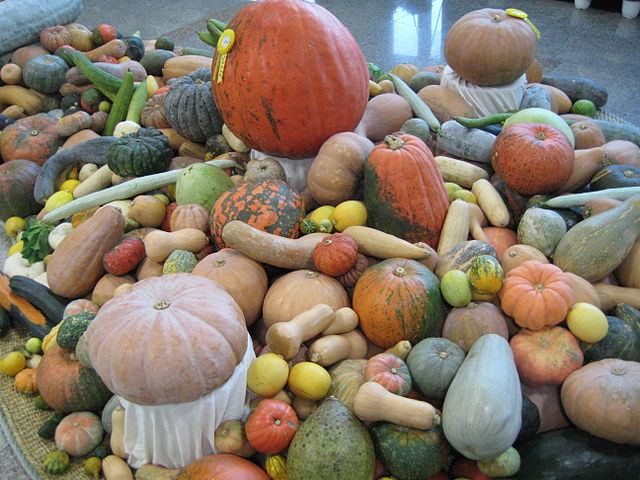Gourds include the fruits of some flowering plant species in the family Cucurbitaceae, particularly Cucurbita and Lagenaria. The term refers to a number of species and subspecies, many with hard shells, and some without. One of the earliest domesticated types of plants, subspecies of the bottle gourd, Lagenaria siceraria, have been discovered in archaeological sites dating from as early as 13,000 BCE. Gourds have had numerous uses throughout history, including as tools, musical instruments, objects of art, film, and food.
Gourds at a market in Massachusetts
Cucurbita pepo gourds grown in a suburban garden in Australia
An Indian gourd
Calabash gourd, Lagenaria siceraria, used for drinking mate
The Cucurbitaceae, also called cucurbits or the gourd family, are a plant family consisting of about 965 species in around 95 genera. Those most important to humans are the following:Cucurbita – squash, pumpkin, zucchini or courgette, some gourds
Lagenaria – calabash, and others that are inedible
Citrullus – watermelon and others
Cucumis – cucumber, various melons and vines
Momordica – bitter melon
Luffa – the common name is also luffa, sometimes spelled loofah
Cyclanthera – Caigua
Cucurbitaceae
Flower of Lagenaria captured at night
Pumpkins and squashes displayed in a show competition
A selection of cucurbits of the South Korean Genebank in Suwon

